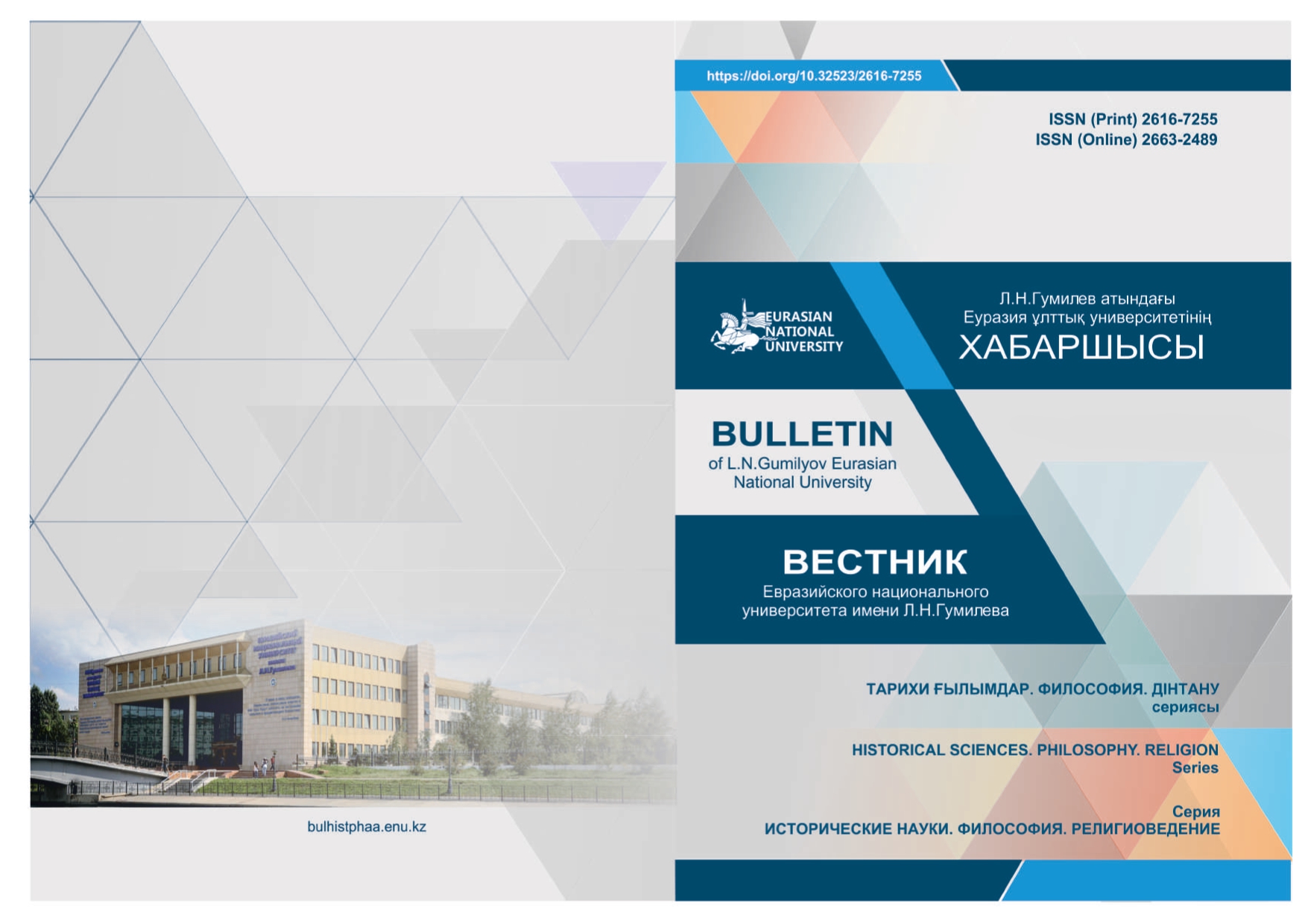The results of complex interdisciplinary work on the monuments of Shubarat and Molaly in the context of the Zhetysu culture of ancient time and the Late Middle Ages
Views: 225 / PDF downloads: 166
DOI:
https://doi.org/10.32523/2616-7255-2024-146-1-87-115Keywords:
interdisciplinary research; Shubarat and Molaly; archeology; ethnoarchaeology; Zhetysu culture.Abstract
The article presents the progress and results of a complex of interdisciplinary research works carried out on one of the most significant monuments in the scientifically little-explored subdistrict of Zhetysu – the burial grounds of Shubarat and Molaly in the vicinity of the village of Shamalgan in the Karasai district of the Almaty region. The stages of scientific work are described in detail, consisting of reconnaissance work within the administrative territory of the Shamalgan rural district, excavation of a wide range of monuments and carrying out a complex of security and popularization works aimed at protecting archaeological and ethnoarchaeological monuments within the Shubarat and Molaly burial grounds and preventing possible destructive conscious and unconscious actions of local residents, robbers, land users and others in relation to historical and cultural monuments. A number of new archaeological sites and ethnographic wintering sites of the late XIX - early XX centuries were recorded during exploration and prospecting. Within the limits of these monuments, both funerary and memorial monuments of the Saka-Wusun period and Kazakh wintering grounds of the ethnographic period have been studied. In the process of security and rescue operations, a set of works and measures have been carried out that have a positive impact and will have an impact on the preservation of priceless historical and cultural monuments. The results of the conducted complex of scientific works are summarized and the preliminary dates of all the studied monuments are given.
Downloads
References
Ageeva E.I. Kurgannye mogil'niki rannih kochevnikov severo-vostochnoj chasti Alma-Atinskoj oblasti // Izvestija AN KazSSR. Serija istorii, arheologii i jetnografii. 1959. Vyp. 3. 80–85 pp. [in Russian].
Ageeva E.I. K voprosu o tipah drevnih pogrebenij Alma-Atinskoj oblasti // Novye materialy po arheologii i jetnografii Kazahstana. Trudy IIAJe. T.12. Alma-Ata, 1961, 21-40 pp. [in Russian].
Kariyev Ye.M., Besetaev B.B. Monitoring sostojanija arheologicheskih pamjatnikov Shubarat i Molaly v 2021 godu // Materialy mezhdunarodnoj arheologicheskoj nauchno-prakticheskoj konferencii «Margulanovskie chtenija-2022» / otv. red. T.B. Mamirov (12-13 aprelja 2022 g.). Almaty: Institut arheologii im. A.H. Margulana, 2022. 246-254 pp. [in Russian].
Nurmuhanbetov B.N., Trifonov Ju.I. Novye pamjatniki sakskogo vremeni bliz g. Alma-Aty // Problemy arheologii skifo-sibirskogo mira. Kemerovo: Izd-vo KemGU, 1989. Ch. 1. 57–61 pp. [in Russian].
Nurmuhanbetov B.N., Trifonov Ju.I. Kurgannye mogil'niki Shubarat i Molaly (kratkaja harakteristika i kul'turno-hronologicheskij analiz) // Saki i savromaty Kazahskih stepej: kontakt kul'tur. Almaty: IA im. A.H. Margulana, 2016. 10–19 pp. [in Russian].
Nurmuhanbetov B.N., Tulegenov T.Zh., Ivanov S.S. Kollekcija predmetov vooruzhenija sakskogo vremeni iz mogil'nikov Molaly i Shubarat // Teorija i praktika arheologicheskih issledovanij. Barnaul: Izd-vo AltGU, 2019. № 1 (25). 99-108 pp. [in Russian].
Trifonov Ju.I. K voprosu ob arheologicheskih kriterijah social'noj stratifikacii vostochnosemirechenskih sakov (po materialam mogil'nika Molaly I) // Problemy arheologii skifo-sibirskogo mira. Kemerovo: Iz-vo KemGU, 1989. Ch. 1. 45-49 pp. [in Russian].
Tulegenov T.Zh., Chekin A.G., Sultanijarova A.Zh. Atribucija i kul'turnaja interpretacija kollekcii keramiki sakskoj jepohi iz fondov gosudarstvennogo istoriko-kul'turnogo zapovednika-muzeja «Issyk» // Vestnik KazNU im. al'-Farabi. Almaty: Қazaқ universitetі, 2019. № 43 (95). 31-38 pp. [in Russian].
Downloads
Published
Issue
Section
License
Copyright (c) 2024 Yeldos Kariyev, Daniyar Tleugabulov , Azamat Dukombayev, Adil Eginbay

This work is licensed under a Creative Commons Attribution-NonCommercial 4.0 International License.








